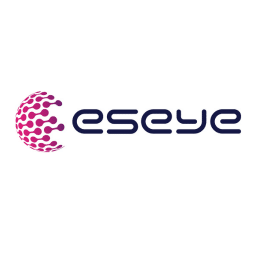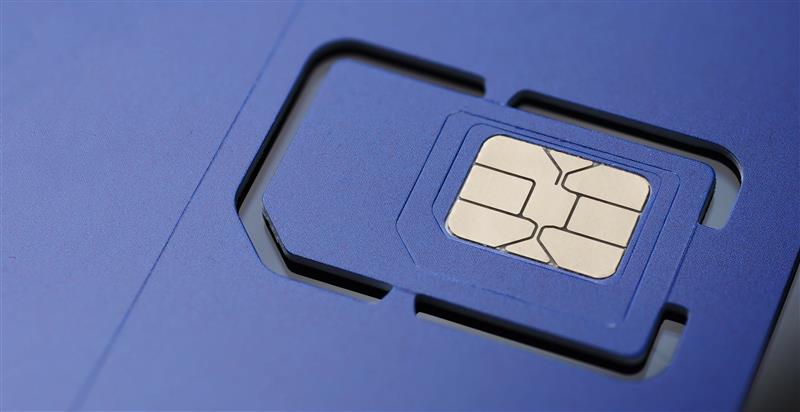One of the reasons the Internet of Things (IoT) is so disruptive is that it makes it possible to have connected sensors everywhere and in everything. When you have hundreds or thousands of devices capable of reporting on an almost unlimited number of attributes, statuses, or environmental factors, significant opportunities are created.
But data analytics remains the key driver here – after all, value can only be unlocked from IoT sensors if the data can be manipulated or mined in a timely manner to make decisions. That’s where Artificial Intelligence (AI) comes in, combining attributes of both technologies into the Artificial Intelligence of Things, or AIoT.
Sensors everywhere
According to Statista, the number of IoT devices worldwide is forecast to almost double from 15.9 billion in 2023 to more than 32.1 billion in 2030.
Major industry verticals leading the charge in IoT adoption are manufacturing, electricity, gas, HVAC, water supply and waste management, retail and wholesale, transportation and storage, and government. Overall, the number of IoT devices across all industry verticals is forecast to grow to more than eight billion by 2033.
Combining this level of connected IoT sensors with the analytical power of AI both in the cloud and at the edge means the opportunity for businesses to create money saving optimizations or brand new revenue streams is huge.
What is AIoT?

AIoT stands for the integration of AI and IoT as the Artificial Intelligence of Things. It combines the data-collecting capabilities and connectivity of IoT devices with the data-processing capabilities of AI.
The two technologies are highly complementary. The IoT ecosystem of ‘things’ with built-in sensors has the potential to generate and collect vast amounts of data. This data can be then analyzed by AI engines capable of autonomously processing large amounts of information and applying the learnings for problem solving or decision making.
In industrial applications this could help identify potential equipment failures before they occur. But in the consumer world your smart oven could determine the best temperature and cooking time for your baking, eliminating the ‘clean skewer’ test for cakes, by sending you a push notification when they reach perfection, even turning the oven off automatically.
AIoT is reshaping how connected devices think and act
Learn how AI and IoT converge to transform business operations
Key Components of AIoT
IoT
IoT is a large network of connected ‘things’ – hardware devices that transmit critical operational, transactional or sensor data. Anything can be connected from your toothbrush, to a vending machine, to a wearable healthcare device such as an insulin pump or heart monitor. IoT is appearing in every and any industry and is enabling us to lead smarter lives and businesses to make smarter decisions.
Connectivity
For any IoT device to deliver on its promise, it must have access to a secure, reliable connection. There are many connectivity options available, from short range technologies like Bluetooth and WiFi, to long-range, low power options in the LPWAN family, and then cellular with international and roaming capabilities.
One size does not fit all when it comes to IoT connectivity, however, and the connectivity technology most appropriate for your deployment will always depend on what you need to achieve.
Generally speaking though, cellular connectivity such as LTE is becoming more commonly utilized by IoT devices in all industries from smart cities, smart vending machines, telehealth, energy, point of sale and payment processing, to logistics and supply chains due to its ubiquitous nature, long range, and high data throughput.
AI
AI is a deep learning technology that leverages the affordable and capable processing power of the cloud to simulate human thinking with machines, and is typically used in natural language processing, speech recognition and machine vision.
If AI is the ‘what’, then ML – Machine Learning – is the ‘how’. ML models are deployed in tandem with AI to create a specific structure, dataset, or vocabulary for the machine to use in its thinking. The models we have access to through ChatGPT are very generic and designed to appeal to the largest audience possible. But for an enterprise deploying an AI in a specific industry, the system needs to be trained on highly relevant models, with highly relevant data in order to be effective.
For an AI in the pharmaceutical sector to make useful decisions and observations, it must have an appropriate dataset that it ‘understands’ and a vocabulary that allows it to articulate its findings. Without specific models, the output would likely be incoherent.
As the technology matures we are even finding that rigorous quality checks need to be performed, even on highly specific AI models, because the technology has a habit of ‘hallucinating’ or filling in gaps in its dataset with manufactured, or fake data.
AI in clouds, edges, and fogs
Many AI systems are deployed across centralized public or private cloud instances, because that’s where the considerable storage and compute power, as well as onward connectivity, resides. But this creates an architecture where data needs to be backhauled from the IoT devices in the field to the cloud where the compute can be performed, and then acted on.
Which, if the IoT device is able to perform a function – such as a temperature sensor with integrated thermostat adjusting the temperature – means moving data to and from the cloud over a long distance.
Depending on the application, this may be tolerable, but in some cases it may be desirable to deploy hardware closer to the deployed IoT devices.
Edge networking moves some hardware right to the network edge close to the deployed IoT devices and may introduce capabilities to perform some simple computation and storage, or act as a gateway that aggregates data from multiple IoT endpoints.
Fog nodes are less dense than a cloud, but reside closer to the network edge and are typically single pieces or clusters of hardware outside of a cloud or data center. This moves the required compute to a physically closer location to the IoT endpoints, delivering an ability to generate faster RoI by acting on the data produced.
Applications of AIoT
Because the benefits of AIoT are so great, it has applications in just about every sector imaginable. These are just a few examples:
Smart cities

Smart cities are the aggregation of lots of other technologies, from smart offices and buildings, to retail, to water, waste and energy management, all overlaid with a ‘city brain’ that helps manage the processes of a city and keep inhabitants and traffic flowing smoothly.
Smart retail

The transformative effect of IoT isn’t just being seen in the traditional POS terminals or card readers you might expect in a store or a restaurant, but also in ATMs, vending machines, parking meters, digital signs and fare collection devices.
Smart homes

Consumer IoT is the world’s biggest market for the technology, and is already awash with a dizzying array of smart appliances that can make human lives easier by learning through interaction and response with a home that thinks for itself.
Smart offices

Smart office buildings use building-wide connected systems, devices, and automation to improve efficiency, safety, and comfort for the building owner/manager and the occupants. This IT managed network infrastructure typically encompasses HVAC, lighting, alarms and security and may extend to more specific innovations depending on the venue’s use case.
Industrial

Automation equipment includes instrumentation for industrial sensors, actuators and machines, and providers of industrial network equipment increasingly offer solutions to enable customers to monitor and control devices wirelessly in parts of the plant that are normally not connected to the control room due to accessibility or wiring costs.
Autonomous vehicles

Autonomous vehicles are one of the AIoT sectors with significant potential because they provide considerable real-estate for the integration of multiple sensors and also the opportunity to
embed AI capabilities in the same device. Vehicles rely on multiple video cameras and sensor systems to gather data about nearby vehicles, driving conditions and even look for pedestrians and hazards.
Autonomous delivery robots

Delivery robots can be used in both a macro environment, such as last mile delivery of small items or food, or in a closed environment like a warehouse or factory to move products or materials around the campus. IoT sensors gather data about the robot’s environment and then use AI to make traversal-based decisions.
Healthcare

The combination of IoT, AI, and Machine Learning is enabling clinicians to interpret patient’s biometric data and identify health warnings faster than ever before. This allows clinicians to intervene earlier, improve patients’ quality of life, and provide them with better outcomes.
The medical devices sector is dominating the IoT adoption race, with larger deployments of devices than any other industry. Since the COVID-19 pandemic, using IoT in telecare and telehealth has been extremely beneficial for both healthcare providers and end-users – reducing the need for face-to-face appointments, and empowering patients to remotely manage their conditions in their own homes.
Want to find out how to implement AI in your IoT deployment?
Benefits of AIoT
The key benefit to AIoT adoption is smarter decision making, by combining raw data from IoT sensors with automated compute and actionable insights that are then executed on by the same system.
Eseye uses AIoT in its AnyNet SMARTconnect™ on-device connectivity software. SMARTconnect algorithms intelligently detect available connectivity and select the optimal network to support each IoT device, wherever they are located. It enables selection and simultaneous optimization of radio access types and operators using multiple device constraints – from bandwidth to power – allowing them to be tailored to meet application needs and data flows.
Together SMARTconnect works hand-in-hand with Eseye’s AnyNet+ SIM and the Infinity Connectivity Management Platform’s rules engine to access a choice of both localized and roaming connectivity across more than 700 cellular networks globally. Enterprises use Infinity to manage their entire IoT estate from a single platform and can introduce new features, firmware updates and more over-the-air to the device.
Challenges and considerations for AIoT
As with all IoT initiatives, the key challenge is selecting the most appropriate connectivity technology. When it comes to IoT and M2M deployments and your decision on which RAT (Radio Access Technology) to use, the best approach is to look at the problem you are trying to solve and the use case for connectivity.
What happens if the data from the IoT device does not arrive in your AI environment in one hour, or 10 hours, 24 hours, 72 hours? Would this timeframe have any significant impact on your business and does the communication between device and AI cloud need to be two-way?
For a smart meter, as long as the usage is reported, the AI application can make use of the data and give you some insights. There is no action to be taken immediately.
But in the case of a healthcare application, a cardiac monitor may need to continuously send data to be analyzed by AI and the system may have to trigger an alert at any time when an anomaly is detected.
This requires a much more robust connectivity solution.
This is where Eseye’s expertise comes into play. If you want to make more informed decisions about IoT device connectivity and performance, or see how we can help you visualize information and generate concise reports or feed data directly into third party reporting or analytics AI tools, let’s talk.
Eseye brings decades of end-to-end expertise to integrate and optimise IoT connectivity delivering near 100% uptime. From idea to implementation and beyond, we deliver lasting value from IoT. Nobody does IoT better.

